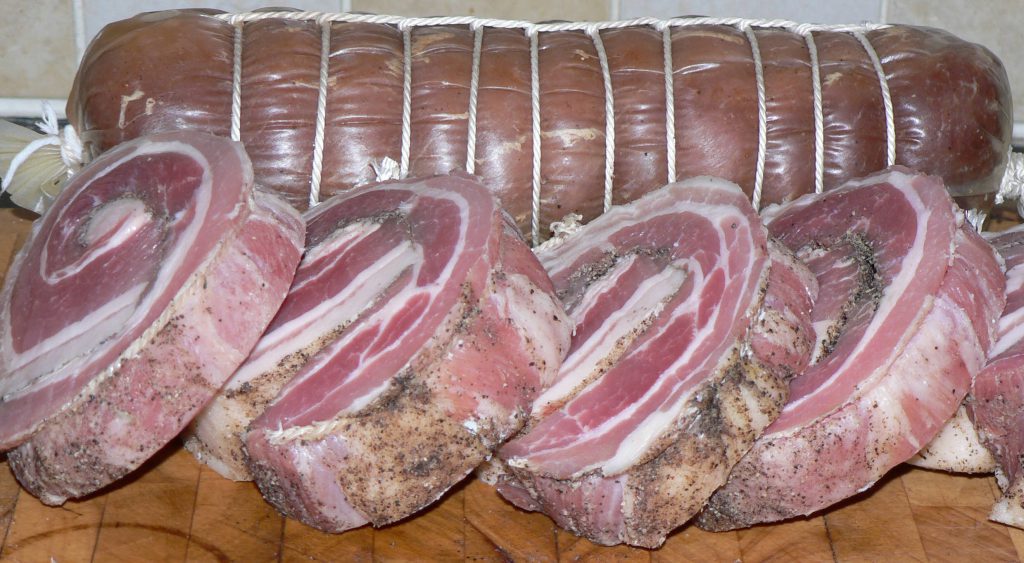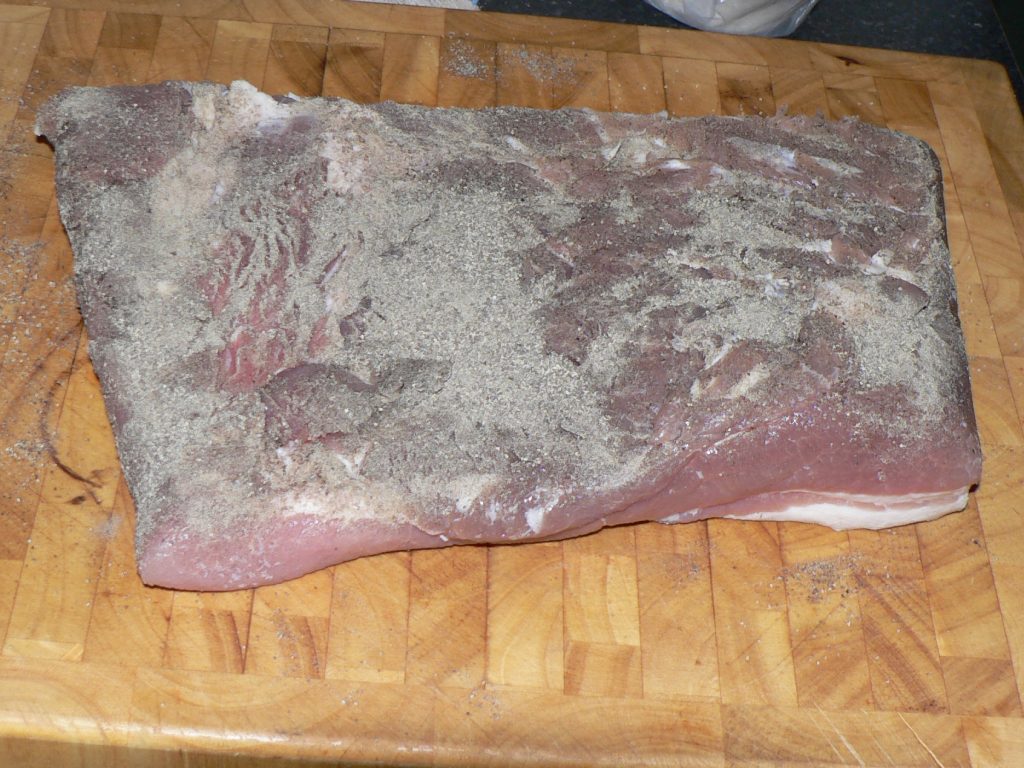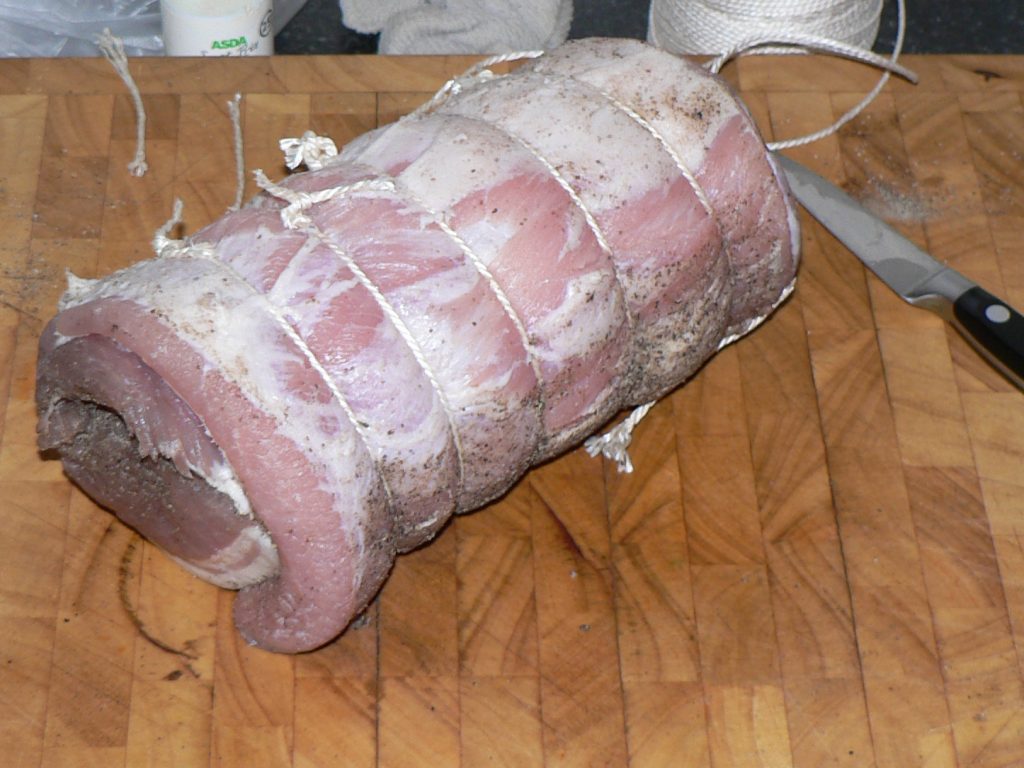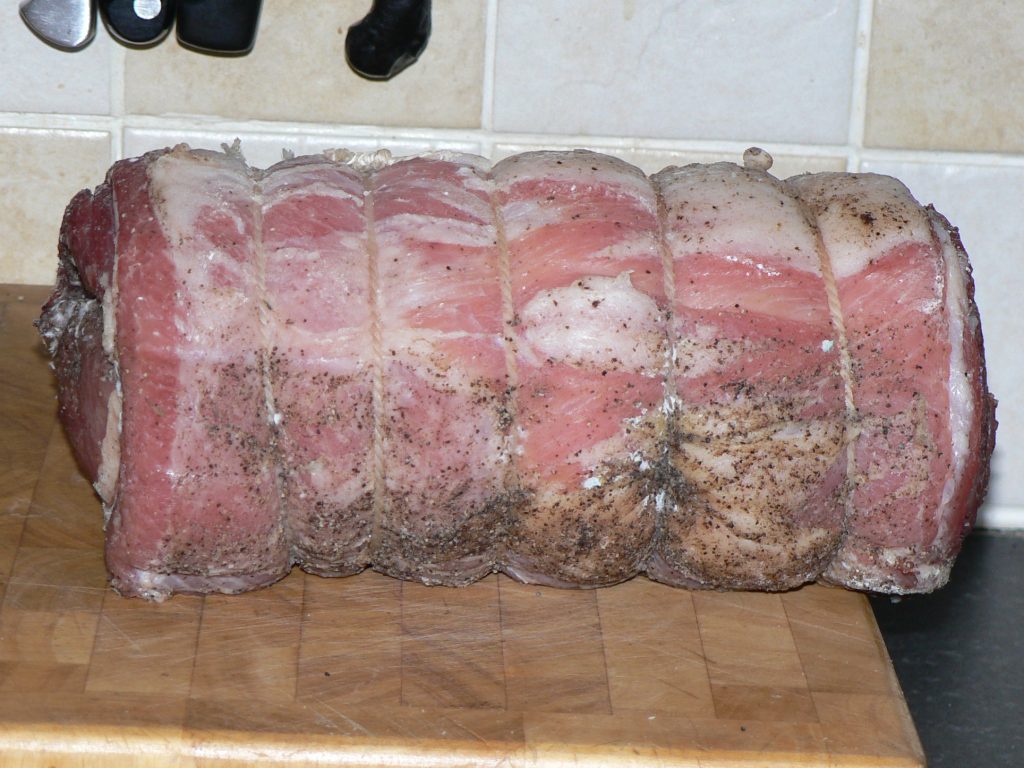
The Gascon salted pork called Ventrèche is bacon that at its most traditional seems to be cured with just salt as a curing agent. However, commercially produced varieties seem to contain nitrite curing salts. This Cookery School article infers that it’s a fresh product used after a day’s salting – however, this by an attendee at the same school explains:
“After salting the belly and adding pepper to taste, we tie it up… …then suspend the roll to smoke it in the giant kitchen hearth overnight before hanging it in Camont’s ancient pantry for use throughout the season”.
That goes some way to show that it is a cured product (albeit that this one’s without nitrite). Of course, it introduces smoking into the equation just to confuse the issue. Other sources refer to it as an unsmoked product and use nitrite or nitrated curing salts; what all varieties have in common is a noticeable swirl of black pepper between the rolled layers of meat, although it can also be sold ‘flat’. It would appear that it can also contain garlic.
Right, so that’s a salted or cured, rolled or flat, smoked or unsmoked, salt-pork or bacon, with or without nitrite/nitrate curing salts, used fresh or hung to dry, with or without garlic, as long as it’s got a layer of black pepper over the meat. Phew! Well, that’s nice and clear then!
In the end, I decided to make a type of bacon that I fancied using in cassoulet and other dishes requiring lardons. Something with a bit more oomph than my normal bacon, but less than a fully dried pancetta. It’s quite salty at over 3% salt with only 1% sugar.
My wife calls it Ventress bacon after PC Alf Ventress from the TV series Heartbeat! Here’s the recipe:
Ventrèche or Heartbeat Bacon
To each 1 kg of Pork belly or pro-rata:
Salt 30 gm
Demerara Sugar 10gm
Saltpetre 0.17gm
Cure #1 – 2.4gm
Fresh Garlic finely chopped 1 clove (optional)
After curing: Ground Black Pepper
See below for a cure calculator.
Mix the ingredients together and rub well into the meat. Place in a food grade bag or vac-pack and put into a fridge, preferably at 6°C to 8°C, for 7 – 10 days turning the bag over and giving the meat a good rub (through the bag) every couple of days. Rinse the meat under cold water, rub dry, and leave to dry further for 24 – 48 hours in a fridge. Dust the meat side with a good layer of ground black pepper:

And then roll it up as tight as you can – knowing the Butchers’ knot is a great help when doing this.

You now want to put it somewhere cool to dry – a temperature of 12°C to 15°C with a relative humidity around 70 to 75% is ideal. If this isn’t possible go for cooler rather than warmer.
It’s now up to you how long you want to dry it for. As mine is to make lardons for cooking, I don’t want it too dry so I’ve only hung it for 10 days during which time it’s only lost about 7% of its weight. It looks pretty good:

It’s the slices at the front – the roll at the back is a Lomo ready for drying.
It’s easier to use this Ventreche Calculator rather than work out your own amounts for the meat you have.